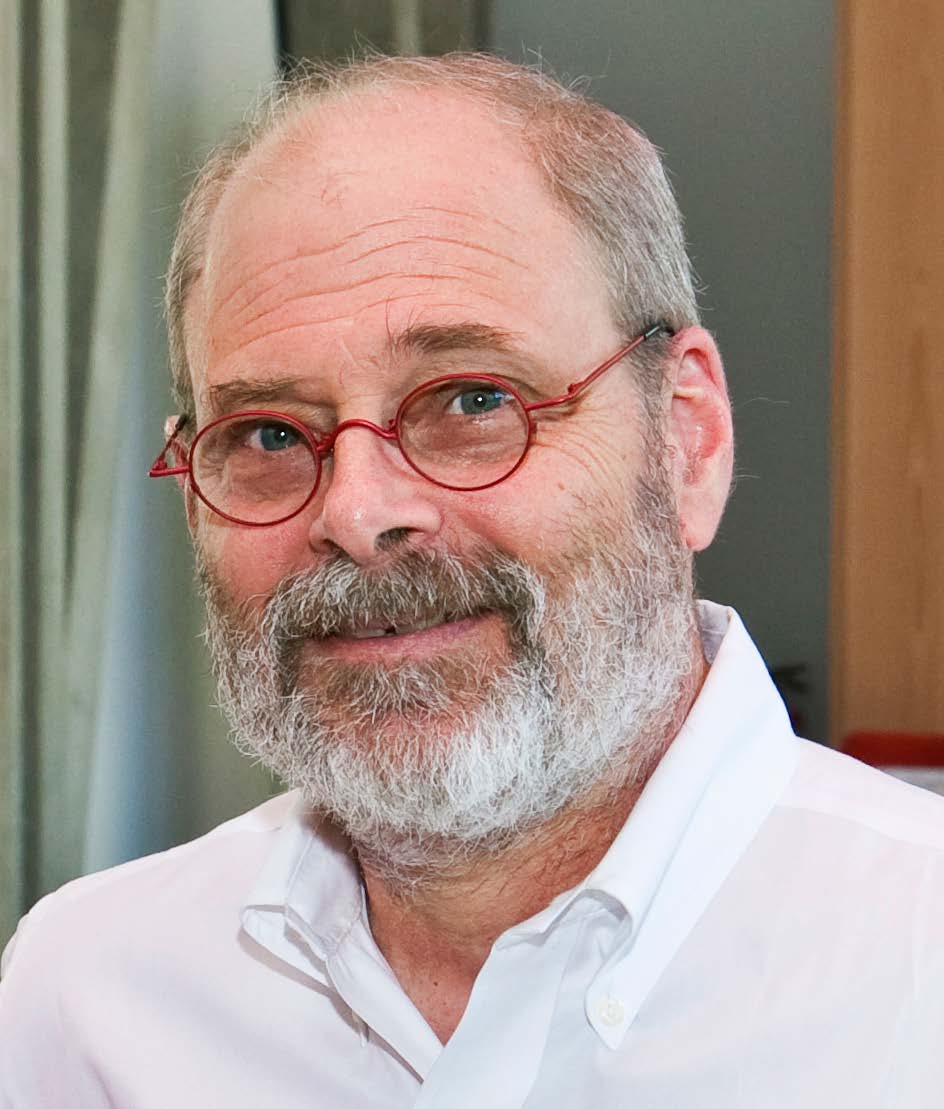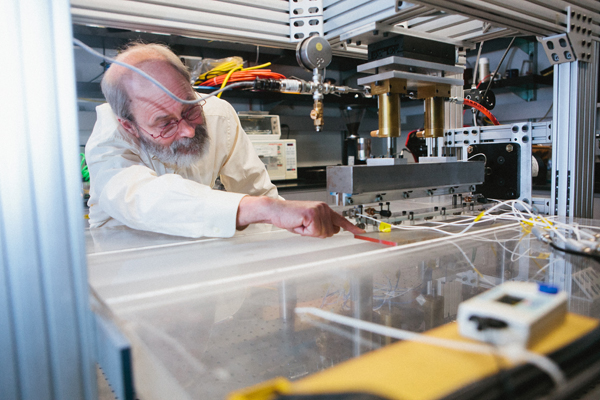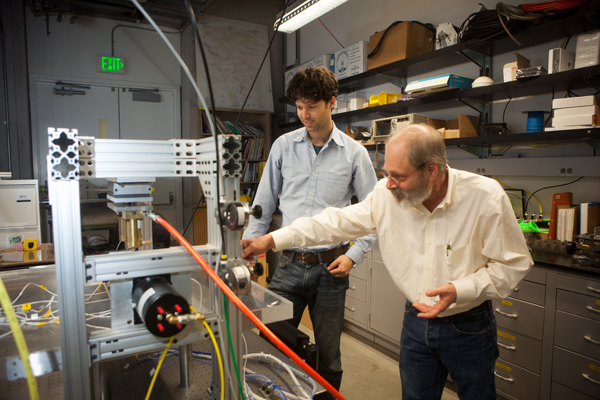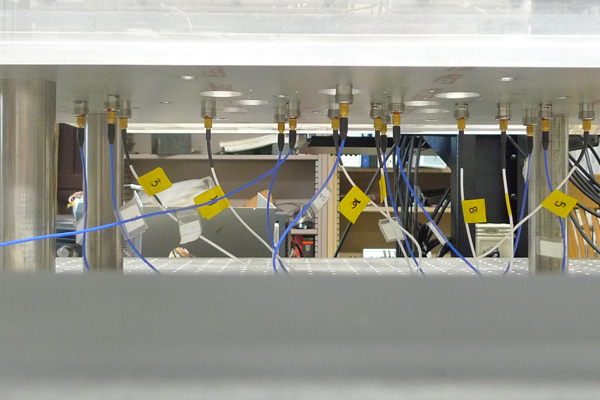Researcher Designs Sensors to Gather Earth Details

This ScienceLives article was provided to LiveScience in partnership with the National Science Foundation.
Steven Glaser has been a professor in the Department of Civil and Environmental Engineering at the University of California, Berkeley since 1996. He is a research scientist at the Lawrence Berkeley National Laboratory, faculty director of the Intelligent Infrastructure Initiative for the Center for Information Technology Research in Service to Society and a professor at the Technical University of Munich, Germany.
Glaser's specialty is designing, making and using sensors. His research covers a wide range of applications — from monitoring snow hydrology processes and water balance in the Sierra Nevada to studying the use of supercritical CO2 (CO2 with properties midway between a gas and liquid) for geothermal energy production. The high-fidelity, nanoseismic sensors he develops, which can measure displacements as small as one picometer (equal to one trillionth of a meter), allow him to image the local mechanics behind earthquake initiation.
Perhaps the eclectic nature of Glaser's work is due to his eclectic background. After high school he earned a B.A. in philosophy. During this time he entered the apprentice program of Local 77 of the International Union of Operating Engineers, became a journeyman, and then worked eight years as a driller. After a year working in Iraq, at the age of 31, he began his engineering career as an undergraduate freshman at the University of Texas, Austin.
Name: Steven Glaser Age: 60 Institution: University of California, Berkeley Field of Study: Civil and Environmental Engineering
What inspired you to choose this field of study?
I find most anything interesting, especially playing with hardware. If pressed, I would categorize my field as geophysics, which is a tremendously large arena. Over the years I have become more and more interested in trying to gain some understanding about the place we live — earth (undoubtedly fed by my years working as a driller). I have researched the behavior of rocks, geothermal energy production, laboratory and field earthquakes, mine safety, etc. This quest requires skills of all sorts, conceptual, theoretical, modeling, measuring. In particular I can assemble intricate machinery and electronics to make my variety of measurements. I grew up to be an excellent mechanic and I always played with electronics so I can have all the fun I want!
Get the world’s most fascinating discoveries delivered straight to your inbox.
What is the best piece of advice you ever received?
"The smartest man in the room is not always right". — Richard Holbroke. This is a sharp way of saying, 'think for yourself.' People most often are blinded by authority of all sorts and at the university the authority is intellect. Lord Kelvin fought like hell for the idea that the earth was "more than 20 and less than 40 million year old." He used his fame as a powerful tool to silence objections. I always try to teach my students, undergraduate as well as PhD researchers that reputation and "smartness" should not interfere in their appreciation of a piece of work. I have given classes poor papers written by well-known researchers to analyze, and then help them realize they are discerning enough to find problems in the manuscript and suggest solid improvements.
What was your first scientific experiment as a child?
My first real experiment, when I was in 3rd grade, involved demolition. My friends and I acquired a couple of M-80s, a sealed firecracker about 2 cm in diameter and we wanted to see how powerful it was. We carefully drilled a hole between a brick course on one of the columns of my front porch and packed in the explosive. We blew out three bricks! Of course we could not continue the experiment past that one data point, but the excitement was worth the punishment.
What is your favorite thing about being a researcher?
I love the freedom that it gives me — I can get an idea about a fascinating problem, map out an approach to implement it, put together the tools and funding needed, and go to work. Being at Berkeley, I have even more freedom, since I have such amazing advisees to share with. Having such accomplished students means I only need to be a coach, gently steering them along a successful path that they have chosen. In the end we all have fun, and somehow we always solve a meaningful problem.
What is the most important characteristic a researcher must demonstrate in order to be an effective researcher?
Insight, delayed gratification, consilience, systems thinking, mental strength, whimsy, creativity …
What are the societal benefits of your research?
I believe that all my work has meaning on two levels — elucidating a fundamental scientific problem and providing useful tools. My work on laboratory earthquakes started as an attempt to understand the basic mechanisms that make up friction. My student pushed this to examine the micro-mechanisms leading up to rupture of faults. In the end we have a paper in Nature giving an explanation of why some earthquakes shake the ground more rapidly, which is vitally important to help earthquake engineers design for our life safety.
I am also working on a snow hydrology project in the Sierra Nevada, examining detailed questions posed by earth scientists. It involves us measuring snow water equivalents across areas and time previously not possible without using our designed wireless sensor networks. This gives me the powerful tool of information. We can now optimize operation of hydroelectric dams while integrating flood control and water supply to farmers. Our technology will save California significant money while enhancing citizen's well-being.
Who has had the most influence on your thinking as a researcher?
This person would have to be Peter McLain, who taught me to be a driller. Being a big kid and coming from Cape Bretton Island in Canada, Peter went into the mines when he was about nine or ten years old. He had no schooling but was one of the most intelligent and observant people I have ever met. He taught me how to figure out solutions for problems I would never think I could solve, from changing out the clutch on a 50,000 kg crane carrier in two feet of mud to the geological properties of the rock 50 m down the hole. He always noticed the key variable and taught me to begin to do so myself. "Hey kid, what about …"
What about your field or being a researcher do you think would surprise people the most?
Most everyone I share it with is surprised about my background in philosophy. They believe that there is a strict dichotomy between humanities and science and technology. This thinking is more common for engineers, many of whom want an answer but can be uncomfortable looking under the hood. Philosophy is the search for understanding, asking the meta-questions, which is also what science is about. In addition I learned how to write, which is very helpful for producing successful proposals and accepted articles.
If you could only rescue one thing from your burning office or lab, what would it be?
Oh, that would have to be my genuine velvet Elvis. It is a rare treasure, especially since the Elvis estate prohibited the painting of them some time ago, saying they were in "bad taste." I would also take my special pencil, the one pencil I used for every homework and test for my entire engineering education. It is my hair of Sampson.
What music do you play most often in your lab or car?
I have grown exceedingly fond of chamber music, in particular Shostakovich, and Brahms for his thickness of sound. Brahms puts Phil Spector to shame. Chamber music permits a lightness and a fluid interplay between ensemble and solo presence which provides me immense pleasure. I also have an amazing collection of Kansas City and be-bop records, including a number of original Bird LPs. In high school Mississippi blues kept me alive.
Editor's Note: The researchers depicted in ScienceLives articles have been supported by the National Science Foundation, the federal agency charged with funding basic research and education across all fields of science and engineering. Any opinions, findings, and conclusions or recommendations expressed in this material are those of the author and do not necessarily reflect the views of the National Science Foundation. See the ScienceLives archive.






